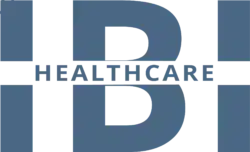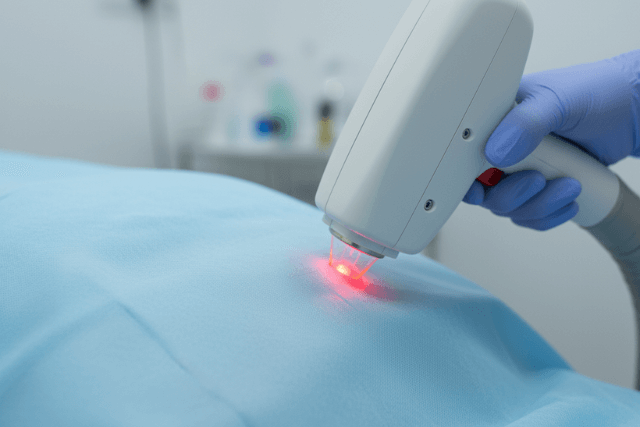Pilonidal disease is a chronic skin condition that occurs in the cleft at the top of the buttocks. It often begins with small pits or sinus tracts beneath the skin that can trap hair, debris, and bacteria. Over time, these tracts can become inflamed or infected, leading to painful abscesses and recurrent drainage. Many patients require surgical treatment to remove the diseased tissue, but one of the biggest challenges is recurrence—even after surgery, pilonidal disease may return in up to 20–40% of patients.
Why Does Pilonidal Disease Come Back?
Recurrence is often related to the same risk factors that triggered the condition initially:
- Excess hair and hair shedding in the gluteal cleft
- Friction, sweating, and prolonged sitting
- Narrow or deep natal cleft anatomy
- Incomplete excision or residual sinus tracts after surgery
Additionally, because loose hair is a key factor, preventing it from re-entering the skin is crucial in reducing recurrence. Therefore, laser hair removal plays an important role in long-term prevention. Furthermore, combining proper hygiene and post-surgical care with hair removal can significantly minimize the chance of the disease returning.
How Laser Hair Removal Helps
Laser hair removal (LHR) uses concentrated light energy to target and destroy hair follicles. Over a series of treatments, the density and thickness of hair in the treated area are dramatically reduced. For pilonidal patients, laser hair removal is typically performed along the natal cleft and surrounding buttock region.
Benefits include:
- Reduced hair density: Less hair means fewer opportunities for ingrown hairs and debris to trigger new abscesses.
- Lower recurrence rates: Multiple studies have shown that LHR after pilonidal surgery significantly lowers the chance of recurrence.
- Non-invasive prevention: LHR is performed in the outpatient setting with minimal discomfort and no downtime.
- Improved hygiene and comfort: Many patients also note improved hygiene and less irritation in the area.
Evidence From Research
Several studies and reviews support the role of laser hair removal in pilonidal disease management:
- A 2024 meta-analysis by Emile et al. concluded that adjunctive laser hair removal reduced recurrence rates by more than 50% compared to surgery alone.
- A prospective randomized trial by Pronk et al. found that patients undergoing laser hair removal after surgery had a recurrence rate of 9%, versus 40% in those who did not.
- Another systematic review suggested that laser hair reduction is a safe, effective, and well-tolerated long-term strategy for preventing recurrent disease.
What This Means for Loganville Residents
For families in Loganville, pilonidal disease is not just a medical issue; it is also a lifestyle challenge. Many residents commute more than 40 minutes each way to Atlanta or other job centers. This long sitting time increases friction and sweating in the gluteal cleft, which are key risk factors for pilonidal disease and recurrence.
In Georgia, obesity rates are around 37 percent, and in Walton County, where Loganville is located, the numbers are also high. Extra weight can increase pressure in the lower back and buttock area, raising the risk of painful flare-ups.
Loganville’s active community, including students, workers with long commutes, and families balancing busy schedules, often has limited time for consistent self-care. That makes preventive strategies such as laser hair removal an important solution for reducing recurrence.
IBI Clinic in Alpharetta is less than an hour from Loganville, which makes specialized care accessible without a long drive into Atlanta. For residents facing recurring pilonidal disease, combining surgery with laser hair removal provides the best chance for lasting relief and better quality of life.
What Patients Should Know
Laser hair removal for pilonidal disease typically requires multiple sessions—commonly 6 to 8 treatments spaced 4–6 weeks apart. Results vary depending on hair color, skin type, and the type of laser used. Start it soon after your wound heals from pilonidal surgery and maintain it as needed for optimal benefit.
Side effects are minimal and usually limited to mild redness or irritation after treatment. Rarely, pigment changes may occur, particularly in darker skin types, but modern medical lasers are safe and effective when performed by trained providers.
Key Takeaway
Pilonidal disease is frustrating because of its tendency to recur, even after surgery. By addressing one of the root causes—excess hair in the cleft—laser hair removal provides a powerful preventive tool. For many patients, combining surgery with postoperative laser treatments offers the best chance for lasting freedom from recurrence and improved quality of life.
Did you know that IBI Clinic is the national leader in laser treatment of Pilonidal Disease and that we have 5 locations serving you and your family’s needs. We now offer laser treatment and laser hair removal at our Alpharetta office.










